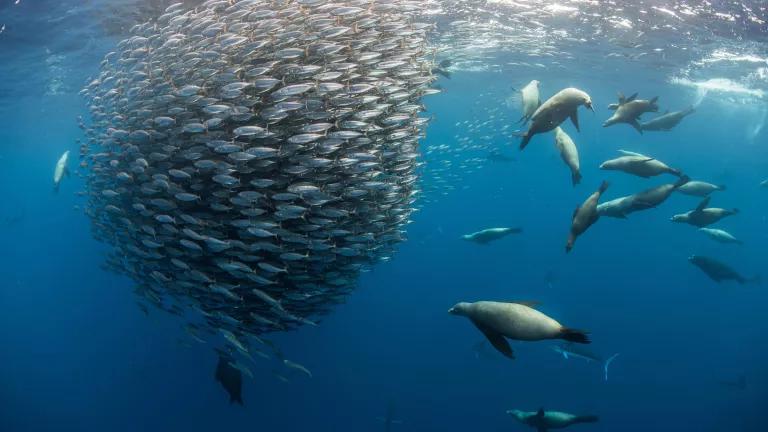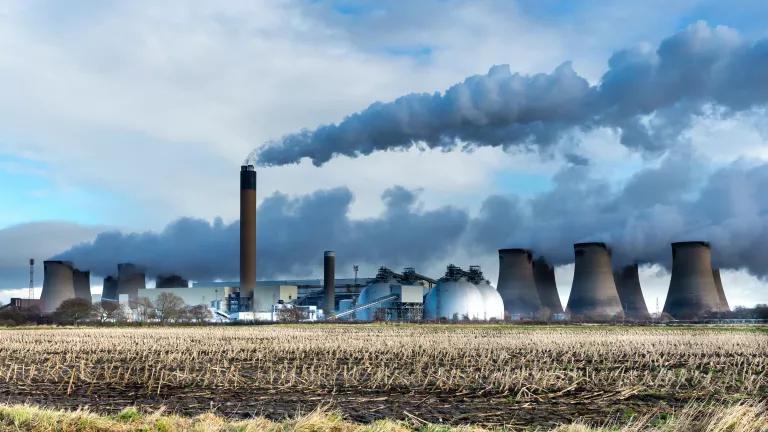Enviva's Wood Pellet Mill in Ahoskie, North Carolina Threatens Endangered Ecosystems and Wildlife
Conversions of large coal-burning power plants to wood (co-)firing in Europe have resulted in the explosive growth of wood pellet exports from North America, most of which originate in the forests of the southern United States. Enviva, the South's largest exporter of wood pellets, currently leads this market and has some of the most biologically diverse and valuable forest ecosystems in the world in its crosshairs. The Wall Street Journal has documented that Enviva, the South's largest exporter of wood pellets, sources wood for its pellet-manufacturing mill in Ahoskie, North Carolina, from clearcut wetland forests in the Mid-Atlantic Coastal ecoregion. This mill produces approximately 400,000 tons of wood pellets per year for export to Europe as fuel for electricity.
Forested wetlands surrounding Enviva's wood pellet facility in Ahoskie, North Carolina, are in serious decline across the landscape. As European demand for wood pellets continues to grow at an alarming rate, these forests will be increasingly vulnerable to impacts from logging. As a result, valuable ecosystems and wildlife are endangered, and nearby communities risk losing myriad benefits provided by natural forests such as the maintenance of water quality and flood protection. It is imperative that Enviva and other companies using biomass or producing wood pellets for utilities establish adequate policies to protect our climate and forests before expanding their activities. Alternatives to burning trees for electricity exist. Wood residuals (such as tops and limbs) or sustainably grown agricultural materials that would otherwise end up in a landfill or burned represent better options for reducing carbon emissions, provided strict sustainability standards are adopted. Energy conservation and efficiency, combined with solar and wind energy are also feasible, preferred alternatives.
The expansion of wood pellet capacity in the South over the past few years has made the United States the largest wood pellet exporter in the world, larger even than Canada. Export volumes reached 1.5 million tons in 2012 and are expected to jump to 5.7 million tons in 2015, according to the North American Wood Fiber Review. This new market creates greater demand for wood at a time when forests are already under tremendous pressure from traditional markets for wood and paper, compromising the future ecological integrity and resiliency of important ecosystems. In addition, multiple scientific studies have shown that burning trees to generate electricity releases more carbon than burning coal. While there is some regional variability in their results due to variations in climate and forest type, all have concluded that most forest biomass is not carbon neutral and, in particular, burning whole trees in power plants increases carbon emissions relative to fossil fuels for many decades -- anywhere from 35 to 100 years or more.
It is imperative that Enviva and other companies using biomass or producing wood pellets for utilities establish adequate policies to protect our forests and climate before expanding their activities.
Natural Forests are Disappearing
Enviva's Ahoskie facility sources wood from the Southeastern Mixed Forests and the Middle Atlantic Coastal Forests ecoregions, both of which have been designated by the World Wildlife Fund as Critical/Endangered, because of their high biodiversity and the combination of habitat fragmentation, conversion, and other threats. The forests within a 75 mile radius -- the distance generally considered to be economical for transporting logs for pellets -- around Enviva's mill in Ahoskie are made up of pine plantations, natural upland pine hardwoods, and forested wetlands. Historically, large acreage loblolly, shortleaf, and slash pine plantations have replaced substantial acreages of natural forests. This is true throughout the Coastal Plain and Piedmont regions of the U.S. South, where upland longleaf pine forests (in the Coastal Plain), as well as wetland forests including Carolina bays and bottomland hardwood forests, have been reduced to just a small percentage of their original size. Pine plantations generally provide poor wildlife habitat, and the biological diversity they support pales in comparison with the diversity found in natural forests. Remaining natural and seminatural forests in this landscape are highly fragmented. Much of the forested wetlands in the broad ecoregion from which Enviva is sourcing have already been lost to logging. The North Carolina and Virginia Natural Heritage Programs already consider these forests highly imperiled where soil conditions, periodic flooding, and low commercial value of the often twisted and less desirable trees have made utilization of wood product resources less profitable.




